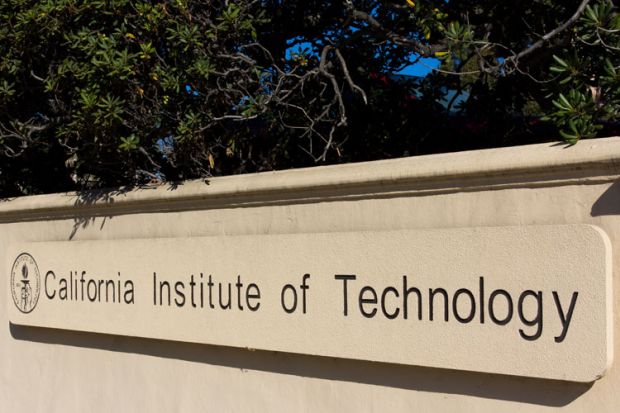Caltech’s Research Highlights Ancient Evolutionary Questions
Cyanobacteria are single-celled organisms that derive energy from light, using photosynthesis to convert atmospheric carbon dioxide (CO2) and liquid water (H2O) into breathable oxygen and the carbon-based molecules like proteins that make up their cells. Cyanobacteria were the first organisms to perform photosynthesis in the history of Earth, and were responsible for flooding the early Earth with oxygen, thus significantly influencing how life evolved.
Geological measurements suggest that the atmosphere of the early Earth—over three billion years ago—was likely rich in CO2, far higher than current levels caused by anthropogenic climate change, meaning that ancient cyanobacteria had plenty to “eat.” But over Earth’s multi-billion-year history, atmospheric CO2 concentrations have decreased, and so to survive, these bacteria needed to evolve new strategies to extract CO2. Modern cyanobacteria thus look quite different from their ancient ancestors, and possess a complex, fragile set of structures called a CO2-concentrating mechanism (CCM) to compensate for lower concentrations of CO2.
Now, new research from Caltech sheds light on how the CCM evolved, addressing a longstanding mystery in the field of evolutionary geobiology. The new study employs genetic techniques to model ancient ancestors of modern-day organisms, enabling researchers to systematically experiment on different versions of bacteria and reveal possible evolutionary pathways.
The study was a collaboration between the laboratories of Caltech professor of geobiology Woodward Fischer and David Savage, associate professor of molecular biology at UC Berkeley and the Howard Hughes Medical Institute. It appears in the journal Proceedings of the National Academy of Sciences.
“This is an emerging way of studying Earth history,” says Fischer. “We can take the modern organism and remake it in the lab, allowing us to test the trajectories of its evolution with rigorous lab experimentation.”
Cyanobacteria “eat” CO2 with the help of an enzyme called rubisco. Rubisco is, simply put, not very good at its job—it acts slowly, and tends to react with other molecules instead of CO2. This is not an issue for cyanobacteria when in an environment with high concentrations of CO2; rubisco can be inefficient and the bacteria can still have enough CO2 to metabolize. But because atmospheric CO2 levels have decreased so much over billions of years, modern cyanobacteria have evolved a CCM to concentrate CO2 within the bacteria’s own body and increase the efficiency of rubisco.
CCMs are puzzling to evolutionary biologists because they are so delicate—altering any of the 20 genes that encode for the CCM’s various parts causes the entire structure to fail.
“We think of evolution as happening step-by-step, with each new gene adding some new function,” says Avi Flamholz, Caltech postdoctoral scholar and lead author on the new paper. “For example, the ancient precursors of the modern human eye didn’t have all of the functions of the eye, but could probably detect light in some form. With the CCM, there wasn’t a clear pathway indicating how they evolved to their present-day complexity.”
In the new study, the team set out to model possible ancient iterations of the CCM structure. To do so, they genetically engineered Escherichia coli bacteria to require CO2 for their metabolism. Because there are established genetic tools for working with E. coli in the lab, it is more tractable to work with this model system rather than cyanobacteria themselves. The team then engineered E. coli strains with the 20 genes that make up the CCM, and systematically added, removed, and tweaked genes in order to model all possible evolutionary trajectories of the CCM structure.
In this way, Flamholz and his team found that there are in fact several biologically viable trajectories that lead to the emergence of the complex modern-day CCM.
“These results highlight the omnipresent dialog between global change and evolution of Earth’s biosphere,” says Fischer. “As CO2 became evermore scarce, cyanobacteria were able to innovate a remarkable biochemical solution.”
The paper is titled “Trajectories for the evolution of bacterial CO2-concentrating mechanisms.” In addition to Flamholz and Fischer, coauthors are Eli Dugan, John Desmarais, Luke Oltrogge,
and David Savage of the University of California Berkeley; and Justin Panich and Steven Singer of Lawrence Berkeley National Laboratory. Funding was provided by the National Science Foundation, the Gordon and Betty Moore Foundation, the Kavli Foundation, the Schwartz/Reisman Collaborative Science Program, the US Department of Energy, and Royal Dutch Shell Energy and Biosciences Institute.

